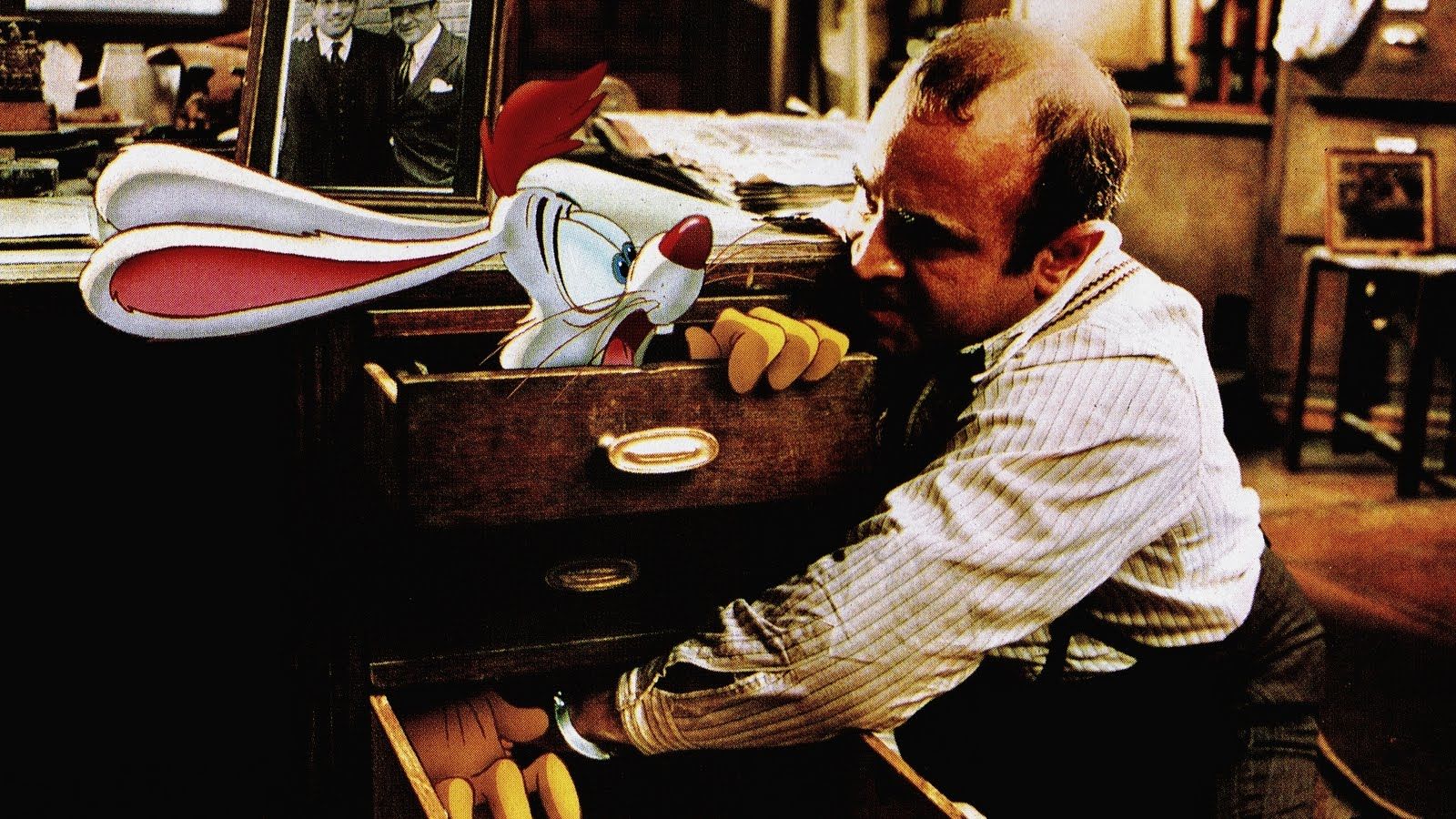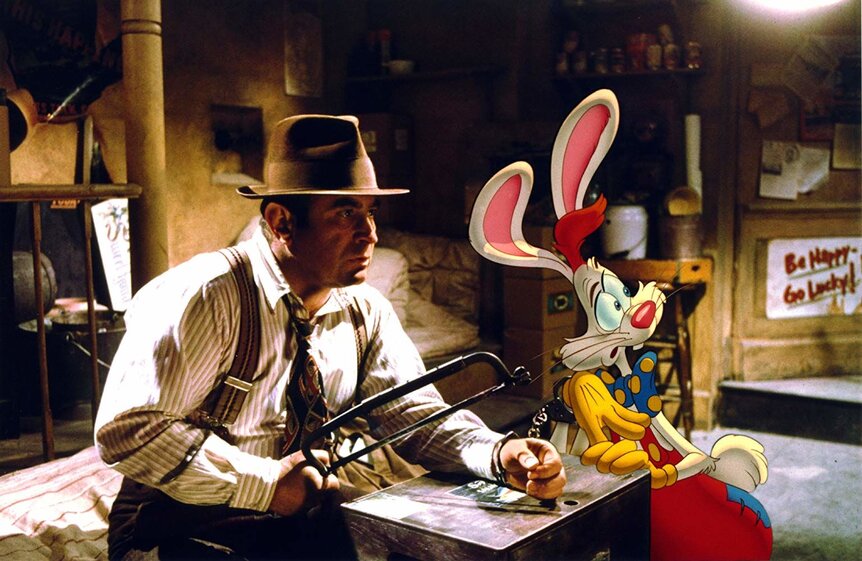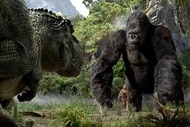Create a free profile to get unlimited access to exclusive videos, sweepstakes, and more!
Why Roger Rabbit, an animated (and legal) marvel, would be impossible today

The best movies make the fantastic appear real on screen, and no film better executed this truism than Robert Zemeckis' 1988 film Who Framed Roger Rabbit. It would be inaccurate to describe the movie as a live-action and animated movie. Instead, Roger Rabbit is a live-action film through and through, and it just so happens that at least half the cast is made up of animated characters.
By the early 1980s, when the film began its protracted development stage at Disney, the concept of putting ink and paint characters alongside flesh and blood counterparts wasn't new. Film pioneer J. Stuart Blackton first experimented with the concept in 1900's "The Enchanted Drawing," a minute-and-a-half silent short utilizing stop-motion animation to make an illustrator interact with his drawing on a large easel. Chuck Jones seemingly borrowed from this concept in the classic 1953 Merrie Melodies meta short "Duck Amuck," in which Daffy Duck finds himself tortured by an omniscient artist, ultimately discovered to be that "stinker" Bugs Bunny.
However, Zemeckis achieved something truly impossible with Roger Rabbit. Thanks in large part to the Academy Award-winning animation direction of Richard Williams, who passed away on Saturday, the cartoon characters in the film truly seemed to be alive and, more importantly, interacting with the humans on screen, which is something Disney had been unable to achieve in any of its previous experiments with live-action and animation. While 1944's The Three Caballeros was the first live-action feature film to integrate animation, Who Framed Roger Rabbit was the first where the animation didn't appear tacked on, but instead, integral to the storytelling and plot. As Janet Maslin of The New York Times wrote in her 1988 review, "although this isn't the first time that cartoon characters have shared the screen with live actors, it's the first time they've done it on their own terms and make it look real."
This was in stark contrast to arguably the most notable example of live-action and animation on screen prior to Roger Rabbit, 1964's Mary Poppins. But despite the praise Mary Poppins garnered at the time — one of the film's five Academy Awards was for Best Visual Effects — the movie was not unanimously loved. Significantly, P.L. Travers, who authored the original Poppins children's book series, hated the animation in the movie so much that she refused to allow any subsequent adaptations of her work.
As an audience member, Williams also hated it; and when he was approached about lending his talents to Roger Rabbit, he initially declined, citing his belief that it was impossible for humans and cartoons to convincingly share the same film frame.
"I said to Zemeckis, I love the early Disney movies, Snow White, Dumbo, Bambi, Pinocchio, Fantasia. Wonderful," he recalled in a 2014 interview. "But Mary Poppins, I thought, was awful. The trouble is, these things are like Tony the Tiger and those terrible ads in the old days where the cartoons look pasted on, like they're on a piece of glass. So I said to Zemeckis, 'You're mixing the two realms, and they don't fit, so it demeans the animation, and it also wrecks the live-action.'"
Zemeckis assured him that for Star Wars: Return of the Jedi, Ken Ralston at Industrial Light & Magic had perfected a method of seamlessly integrating animation and live-action for the speeder bike chase through the forest of Endor, so that it appeared that all the various cinematic elements were shot at the same time, not with the effects layered, one on top of the other, on the live-action plate.
Williams was convinced and signed on, following a simple belief, an animation philosophy that the film's characters who hailed from Toontown should appear to be two-and-a-half dimensional. Since they were actual cartoon characters, they would still be somewhat flat, but their edges would be rounded and they would be lit to reflect that they had a bit of depth.
This extra half-dimension is, in large part, what made Who Framed Roger Rabbit so convincing. As the sequins sparkle on Jessica Rabbit's dress, as she seductively flaunts all her dimensions in the Ink and Paint Club, it's easy to forget that the human actors she's sharing the scene with weren't really interacting with her during filming. In fact, unlike filmmaking today, where an actor like Andy Serkis can don a motion-capture suit and be replaced with an animated Gollum or Caesar in post-production, for the most part, actors like Bob Hoskins (who played Eddie Valiant) and Christopher Lloyd (as the sinister Judge Doom) interacted with a series of mechanical devices, life-sized figurines, and, more often than not, their own imaginations and thin air when sharing scenes with their eventual animated colleagues.
Who Framed Roger Rabbit succeeded in achieving the impossible on screen, not only because of the way it blended the two realms but also by the sheer quantity of animated characters who made up the cast from competing companies. Although the film was a Disney release, characters were licensed from MGM (Droopy Dog is a semi-sadistic elevator operator), Paramount (Betty Boop is a cigar and cigarette girl), Universal (Woody Woodpecker has a line and laughs his famous laugh in the film's final moments), and over 20 characters from Warner Bros. In fact, the movie remains the only time both Mickey Mouse and Bugs Bunny, as well as both Daffy and Donald Ducks (seemingly no relation), have appeared onscreen together.
As entertainment companies are increasingly hoarding their intellectual property for subscription streaming services and the like, it's hard to believe that just over 30 years ago, these iconic characters would be loaned out to Disney. Steven Spielberg, who executive produced the film for Amblin Entertainment, was instrumental in convincing the various studios to let their characters appear in the film, with reportedly very few stipulations and no creative control whatsoever. Although Spielberg was instrumental in securing the lifeblood of Roger Rabbit, his relationship with Disney was short-lived; he didn't collaborate with the studio again until 2016's The BFG, nearly 30 years after Roger Rabbit hit theaters.
Who Framed Roger Rabbit also achieved the impossible for Disney. While The Little Mermaid is often credited with ushering in a renaissance for Disney's animation department, when Roger Rabbit was green-lit at a budget of $30 million, making it the most expensive animated film in history, the company's chairman, Jeffrey Katzenberg, said they were investing heavily in the movie because they believed it would "save" their animation department. Ultimately, the film's budget skyrocketed, with The New York Times reporting in 1991 that it ballooned to $70 million, while Amblin and Disney insist the actual cost was "about $50 million." Should the former number be true, the movie was the most expensive film at that point in time.
Regardless, Katzenberg was correct. With $156 million in domestic box office returns and the total haul more than doubling once international receipts were factored in, the movie did, in fact, resurrect a struggling animation department. By the time Mermaid was released a year and a half later, the pump had successfully been primed.
Who Framed Roger Rabbit was a technical and cinematic achievement unlike any other, which achieved the impossible due to the relentless ambition of its filmmakers and the unique industry circumstances at the time. Although the film was an enormous success, for a generation of kids it demonstrated that a silly, yet charming guy could successfully land a beautiful and talented woman, if only he could make her smile, darn ya, smile.
For all those wondering how Seth Rogen and Adam Sandler have successfully carved out careers as romantic comedy stars, look no further than Jessica Rabbit's simple explanation as to why she married Roger: "He makes me laugh."



























